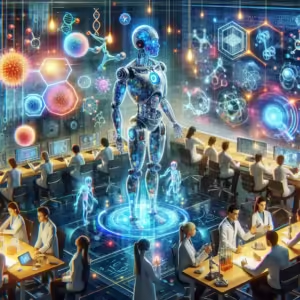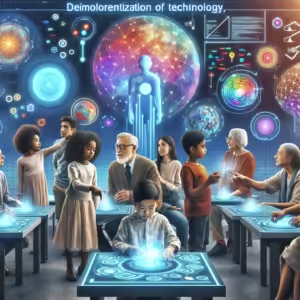Introduction to North America’s AI Diagnostic Market
North America is making significant strides in the Artificial Intelligence (AI) in Diagnostics Market, as emerging technologies like machine learning (ML) and deep learning algorithms become pivotal in driving growth. With the healthcare sector in constant pursuit of innovative solutions, AI has been a game-changer, enhancing diagnostic accuracy, speed, and efficiency. This article delves into the developments and transformative impact of AI technologies in North America’s diagnostic landscape, while also projecting growth trends between 2024 and 2029.
The Role of AI in Modern Diagnostics
AI has revolutionized the diagnostic process by delivering more accurate predictions and reducing the likelihood of human error. Here’s how AI contributes to modern healthcare:
- Increased Accuracy: AI-powered tools and algorithms are trained on vast datasets, enhancing their ability to detect patterns that might elude the human eye.
- Efficient Data Analysis: Automation through AI allows for quicker analysis of complex data sets, facilitating faster diagnosis.
- Personalized Medicine: AI aids in tailoring treatment plans to the unique genetic and environmental factors of each patient.
- Predictive Analytics: AI can predict patient outcomes based on historical data, enabling proactive healthcare interventions.
Leading Technologies Boosting AI Diagnostics
North America’s growth in the AI Diagnostics Market is significantly driven by advanced ML and deep learning technologies. These technologies offer:
Machine Learning
Machine learning algorithms are empowering diagnostic systems by:
– **Learning from Data**: ML models improve over time as they process more data, becoming adept at delivering more refined results.
– **Pattern Recognition**: ML excels in recognizing patterns, which enhances disease detection and diagnosis accuracy.
– **Real-time Analytics**: These algorithms can provide instantaneous analysis, crucial for emergency diagnostic procedures.
Deep Learning
Deep learning, a subset of ML, utilizes neural networks to further elevate diagnostic capabilities:
– **Image Analysis**: In medical imaging, deep learning algorithms can identify minute anomalies, improving detection of tumors and other conditions.
– **Natural Language Processing (NLP)**: Deep learning models enhance the ability of AI systems to interpret and analyze unstructured data, such as clinical notes.
– **Adaptability**: These algorithms adapt to new data, continually improving their diagnostic precision.
Market Drivers and Opportunities
Several factors are propelling the growth of AI in diagnostics across North America:
- Healthcare Digitization: The digital transformation of healthcare systems facilitates the integration of AI-based solutions for improved patient outcomes.
- Investment Surge: Significant investments are being funneled into AI startups and technology development, indicating robust growth potential.
- Government Initiatives: Supportive policies and funding from government bodies are encouraging technological advancements and research in AI diagnostics.
- Rising Prevalence of Chronic Diseases: The growing incidence of chronic diseases necessitates efficient diagnostic tools, lifting the demand for AI-driven solutions.
Challenges to Overcome
Despite its promising outlook, the market faces several hurdles:
- Data Privacy Concerns: Ensuring the confidentiality and security of patient data remains a significant concern with AI systems handling sensitive information.
- Integration Issues: AI solutions need to be seamlessly integrated with existing healthcare IT infrastructures, which can be a complex process.
- Regulatory Hurdles: Navigating the regulatory framework for AI technologies in healthcare is challenging, slowing the deployment of new innovations.
- Skill Gap: There is a shortage of skilled professionals adept in AI technology, which may impact implementation and growth.
Future Outlook: Growth Projections and Trends (2024-2029)
The AI Diagnostics Market in North America is on a promising trajectory, with several anticipated trends:
– **Expansion of AI Applications**: AI will extend beyond traditional diagnostic areas, finding applications in lesser-explored fields such as genetic diagnostics and mental health assessments.
– **Collaborative Ecosystem**: Partnerships between technology firms, healthcare providers, and research institutions will fuel innovation and market expansion.
– **Enhanced Remote Diagnostics**: AI will play a crucial role in advancing telemedicine solutions, enabling accurate remote diagnostics and patient monitoring.
– **Ethical AI Development**: Focus on developing ethical AI systems that emphasize transparency, fairness, and accountability will gain momentum.
Conclusion
As North America continues to lead in the application of machine learning and deep learning technologies, the region’s AI Diagnostics Market is poised for impressive growth. Despite facing challenges, the blend of technological innovation, investment influx, and policy support highlights a future where AI becomes an integral pillar of the healthcare diagnostic ecosystem. By leveraging these advanced technologies, North America is set to elevate the standards of diagnostic care, ensuring better healthcare outcomes for all.








